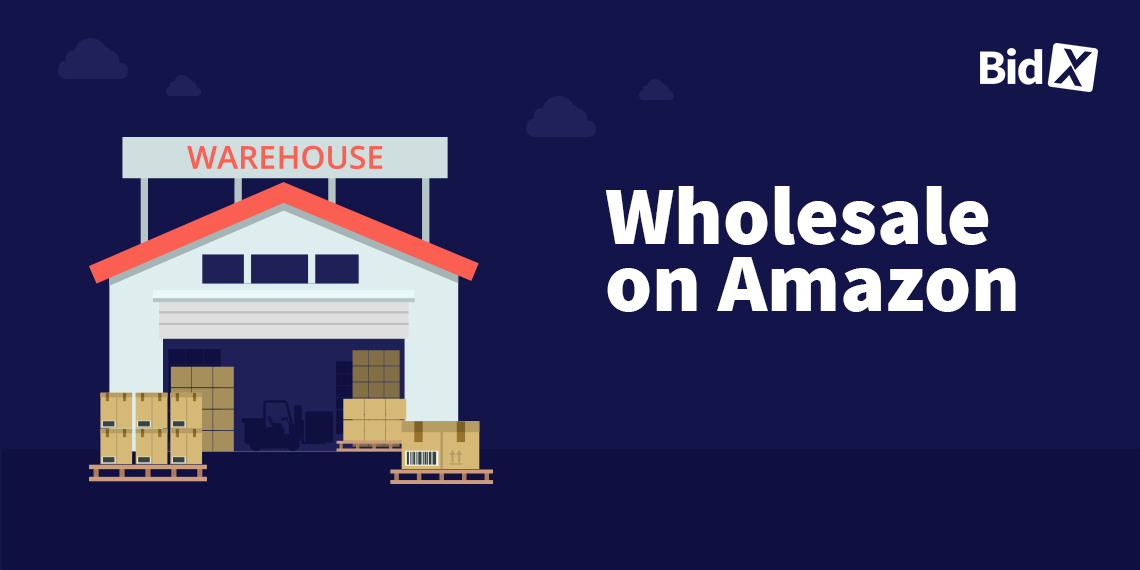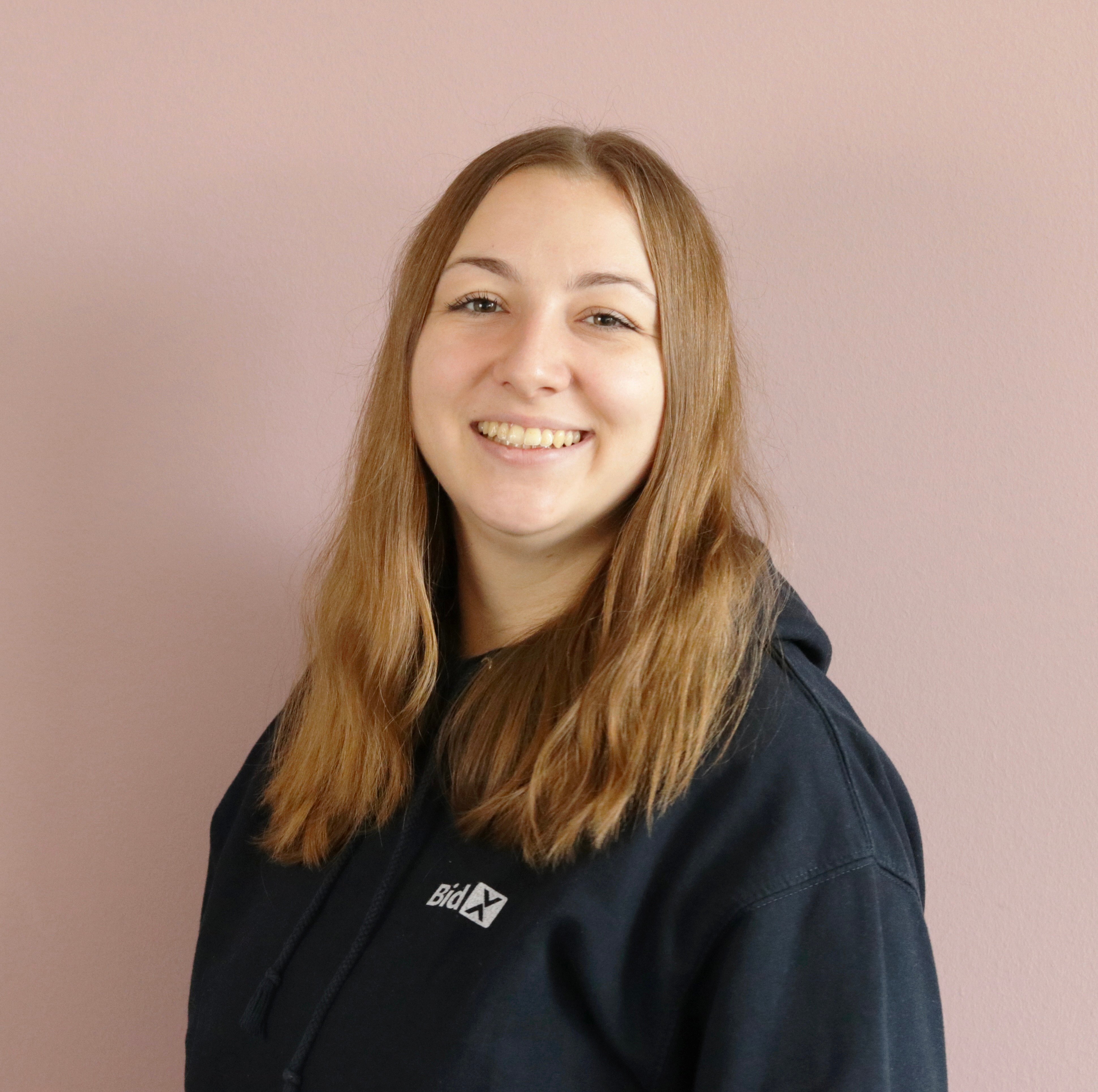

There are a lot of different ways to make money on Amazon and scale your e-commerce business. One of them is the so-called Wholesale.
Using the Wholesale model on Amazon means buying products in bulk directly from a manufacturer or distributor, then reselling those products to customers for a profit.
To succeed in Amazon wholesale, you'll need to build working relationships with manufacturers, have some capital to invest in inventory, and learn how to navigate Amazon's policies and procedures.
In this article, we'll show you how to get started selling items on Amazon you acquire wholesale. We'll also touch on some of the pros and cons of wholesale Amazon, how it differs from other selling models, and what you need to know about the platform’s all-important " Buy Box ."
Popular selling models on Amazon include retail arbitrage, private labeling, and dropshipping. Here's how each one is different from wholesaling on Amazon:
Retail arbitrage is the practice of buying products from brick-and-mortar stores at a discount, then selling those same products on Amazon for a higher price. Arbitrageurs don't typically buy in bulk directly from the manufacturer or distributor.
Private labeling is when you source products from a manufacturer, then add your own branding and packaging before selling them on Amazon. In wholesale, you're not adding any branding to the products — you're simply reselling them as-is.
Dropshipping is when you sell products on Amazon that are stocked and fulfilled by a third-party supplier. In some cases, you never see or touch the merchandise — you simply act as the middleman between the customer and the supplier.
Now that we know how Amazon wholesale differs from other business models, let's discuss some of its pros and cons.

Product demand: By selling items that are already popular with Amazon shoppers, you can quickly turn a profit and grow your Amazon business without having to worry too much about marketing.
High margins: Wholesaling generally offers higher margins than other selling models. This is because you're buying products at lower "wholesale prices" and then reselling them closer to their retail price. In some cases, you may even sell products higher than the retail price if there's high demand and low supply.
Scalability: Once you've established working relationships with manufacturers and distributors, wholesaling can be a very scalable business model. As your business grows, you can place larger orders and turn a higher potential profit.
Upfront cost: One of the biggest drawbacks of wholesaling is that it requires a significant amount of upfront capital because you're buying larger quantities of products in bulk.
Competition: Wholesaling can be a competitive business, especially on Amazon where thousands of sellers are also looking for deals from manufacturers and distributors. (To gain an edge over these sellers, see our "Buy Box" section below.)
Outreach: Contacting manufacturers for wholesale opportunities is a time-consuming process. You'll need to do extensive research, reach out to multiple manufacturers, and follow up until you find the right fit.
These key factors that will affect your profitability as a wholesaler on Amazon:
The products you choose to sell will have a big impact on your bottom line, so look for items that are in high demand but not overly saturated.
What's more, avoid selling "Sold by Amazon" or private label products, as these will have a significant competitive advantage. Amazon, for one, can afford to sell products at a loss to drive out competition.
To find out if a product is sold by Amazon, filter your search results by selecting the "Amazon.com" box from the left sidebar on the product page. To tell if the product is listed by a private labeler, there will likely be just one seller on the listing. By contrast, multiple sellers on one listing usually means the product is open to wholesalers.
You can use Amazon's search suggestions, "people also searched for" feature, or Best Sellers Rank (BSR) to gauge demand and see how well a particular product is selling.
Lastly, pick well-reviewed items from small-to-medium-sized manufacturers. Chances are, they'll enjoy less competition and higher margins.
A product's margin is the difference between its wholesale cost and the price you sell it for on Amazon. For example, if you buy 50 units of a product for $5 each and sell them on Amazon for $10 each, your margin would be 50%, assuming you have no other fees to pay.
To find products with healthy margins, do some research on Amazon and other e-commerce platforms to see what similar products are selling for. You can also use the platform's Fulfillment by Amazon (FBA) Revenue Calculator to get an estimate of the fees you'll be charged for selling a particular product.
Selling products with a 50% margin is generally considered good, but a 100% margin is even better. Keep in mind, however, that products with higher margins often come with higher risks.
No matter what product you sell, there will be other sellers vying for the Buy Box — the coveted space on a product listing that allows customers to add an item to their cart with just one click.
Think of the Buy Box as the Holy Grail for Amazon sellers. That's because the majority of customers never scroll down an Amazon product listing. They simply look for the "Add to Cart" button and click it. If your product is in the Buy Box, you're more likely to make a sale. If it's not, you're at a disadvantage.
To increase your chances of winning the Buy Box, you'll want to keep your prices competitive. A rule of thumb is to list the item within 2% of the Buy Box price offered by the current leader. For example, if the leader is selling a product for $10, you’d want to list your product for between $9.80 and $10.20.
You'll also want to ship your products quickly and provide excellent customer service. These are both important factors that Amazon considers when awarding the Buy Box to a seller.
State and local governments in the U.S. market may have an interest in collecting sales taxes on the products you sell: "As a general policy, the same item should not be taxed multiple times on its way from the manufacturer to the consumer. Therefore, a wholesale license allows you to buy from the manufacturer and sell to the retailer without paying tax.”
But not every product you sell on Amazon requires a special license. To be sure, check with your state's consumer affairs office, small business administration office , or the manufacturer of the product.
Also, keep in mind that some manufacturers may ask for your company's EIN (Employer Identification Number) before taking you on as a wholesale reseller. In that case, you can apply for an EIN through the IRS website .
If you haven't already done so, the first step is to create an account on Amazon's sellers' platform .
Amazon offers two types of seller accounts: Individual and Professional.
A professional account is best suited for businesses selling large volumes of products. The membership costs $39.99 per month (plus additional fees) and includes access to Amazon's marketing tools, Buy Box eligibility, and other listing customization options.
For low-volume sellers, an individual account might be suitable. There's no monthly membership fee, but you'll pay $0.99 per item sold, plus other selling fees.
While it's possible to run a wholesale business on an individual account, the high-volume nature of wholesaling typically makes a professional account the better option in the long run, especially when competing for the Buy Box.
As we mentioned earlier, Amazon wholesale is all about strategizing which products to buy in bulk and then sell at a higher price. For the best chances at success:
Additionally, Amazon's built-in FBA revenue calculator can help you determine whether a product is likely to be profitable. Just enter the product's ASIN (Amazon Standard Identification Number), dimensions, and weight, and the calculator will spit out an estimate of that product's monthly sales and revenue.
The next step is to find a reputable wholesaler who can provide you with the products you're interested in selling. Here are a few tips to help you find a good fit in the U.S. market:
Another option is buying from Alibaba.com, a Chinese marketplace similar to Amazon. With Alibaba, you can find manufacturers and wholesalers selling products in just about any niche imaginable. However, it's important to be aware of the risks associated with buying from overseas suppliers, such as longer shipping times, quality control issues, and potential scams.
Once you've found a few potential candidates, it's time to reach out and introduce yourself. When contacting wholesalers, always remember to:
Start by filling out a contact form on the wholesaler's website or emailing them directly. This tried-and-true template can help you get the conversation started:
Subject: Wholesale Account
I am interested in carrying your line of products in my store. Can you please send me a price list and catalog? I am also interested in minimum order quantities (MOQ).
Let me know what information you might need from me and I'll be happy to provide it.
Thank you for your time,
(Your name)
(Your store name and website)
If you don't hear back within a few days, pick up the phone and give them a call.
Once the conversation is underway, be sure to take note of the wholesaler's customer service skills. This will give you a good idea of what it will be like to work with them on an ongoing basis.
At this point, you may also request documents to verify the wholesaler's legitimacy, such as a business license, product liability insurance, and terms of sale.
Once you start receiving orders, it's important to fulfill them as quickly and efficiently as possible. This will help ensure that your customers are happy with their purchases and are more likely to buy from you again in the future.
There are two ways to fulfill orders on Amazon wholesale:
Fulfillment by Amazon (FBA): With this option, you ship your products to an Amazon fulfillment center and they take care of the rest. This includes packaging, shipping, and customer service. The downside is that it can be more expensive than fulfilling orders yourself.
Fulfillment by Merchant (FBM): With this option, you fulfill orders yourself. This means that you're responsible for packaging, shipping, and customer service.
Which option you choose will depend on your budget and the volume of orders you're receiving. If you're just starting, FBM may be the best option. As your Amazon business grows, you can consider switching to FBA for additional help.

Wholesale Amazon can be a great way to make money and scale your e-commerce business.
Just remember, Amazon wholesale is all about finding the right products to buy in bulk, establishing working relationships with manufacturers and wholesalers, and fulfilling orders quickly and efficiently.
Once you've got the hang of it, you'll be well on your way to success! What you should not neglect, however, are PPC ads for your products. These help you generate visibility and sell more products. However, managing ads manually is very time-consuming and requires a high level of expertise. For this reason, you should use a PPC management tool like BidX for your ads. BidX controls, optimizes and monitors your keywords and bids in a fully automated way.


By Lena Einschütz
Published on:
Tue, Oct 25, '22